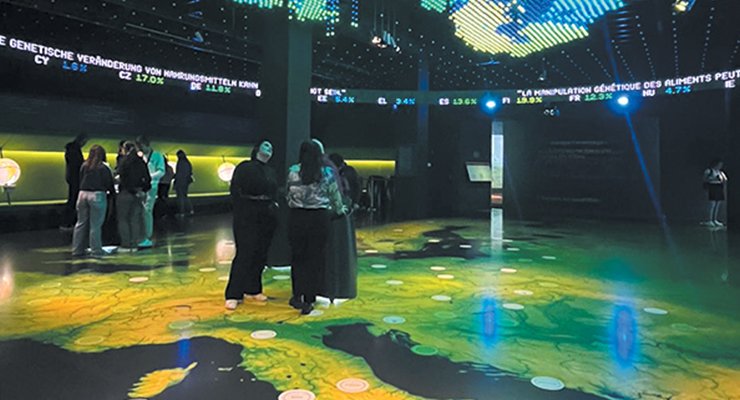The Jean Monnet Chair

Martin Morgeneyer is a lecturer-cum-research-scientist at the UTC’s TIMR laboratory, which specialises in the control of particle systems. He now holds a Jean Monnet Chair of the European Union
The «Empowering Europe, Environment, Engineering» Chair focuses on the ecological transition and the respective roles of engineering and the European Union (EU) in achieving it. This Chair places UTC in an international network of excellence, thanks to the EU Commission. A network that will act as a catalyst for the launch of teaching and research initiatives within the University to meet the challenges facing humanity.
Among these challenges? «In the space of a few years or decades, humanity has destroyed two-thirds of insects, vertebrates and a large proportion of resources. We all know that we are now living on credit, a debt that is becoming more dangerous by the day», warns the new ‘Jean Monnet professor’ Morgeneyer.
How can we bring about a positive change in the situation? «On the one hand, there are the ‘collapsologists’ who are studying our current trajectory, which is leading us straight into the wall. On the other hand, there are our engineering sciences, which can help to reverse the trend: integrating ecological reasoning into our approaches, enhancing the knowledge of citizens and assisting decision-makers. The result will be a set of structures designed to promote responsibility, control and sobriety. Helping to achieve this is the aim of my Jean Monnet Chair,» he says. Martin Morgeneyer is firmly among those who believe in the corrective effect of scientific technological knowledge.
To illustrate his point about the human capacity to rise to challenges, he uses the metaphors of road safety and the creation of Europe after the 2nd World War. «In the 1970s, road accidents claimed almost 16,000 victims a year in France, even though road traffic was much lower than it is today. In 50 years, the number of victims has been reduced by a factor of five, thanks in particular to technological progress by manufacturers and the introduction of innovations such as seatbelts, airbags, various controls, etc. There have also been changes in regulations, particularly with regard to speed limits, which have played a role. In a nutshell: it was the involvement of all the players concerned — engineers, citizens, decision-makers — that made this positive change possible. Another example: the founding of Europe. At a time when Europeans had been at war with each other for centuries, and still in the midst of the 2nd World War, French visionaries began to design a new Europe that would enable us to forge political, economic, social and cultural links that would make it virtually impossible for a new conflict to arise. Under the leadership of Jean Monnet and Robert Schuman, Europeans showed that they were capable of taking a virtuous turn», explains Martin Morgeneyer.
In 2019, Europe launched the Green Deal, a set of measures designed to put the EU on the path to ecological transition. It’s a pact that requires a comprehensive, transverse approach.
What are the main issues addressed by the Green Deal? Europe is engaged in a legislative process that includes initiatives on climate, the environment, energy, transport, industry, food, agriculture, biodiversity and sustainable finance. In this sense, the Green Pact is a huge opportunity for us, as universities and engineering schools, to prepare students for these challenges, but also to contribute to future solutions or those already in the pipeline», he asserts.
What is the ideal profile of an engineer to meet the challenges raised by the Green Deal? “We will need engineers who are able to understand the reluctance of some people to change their behaviour in society and, on the technological side, to seek out and implement innovative and scientifically relevant solutions, while taking a historical and anthropological approach», he stresses.
The Jean Monnet Chair aims, in this sense, to provide overall elements facilitating an effective environmental transition. « UTC has historically been involved in issues related to sustainability and the European Union. We have therefore built this Chair on these existing courses. We are also conducting research projects (CALIPER, D‑Brake, miplexmo, etc.) with European partners on the issues addressed by the Green Pact,» concludes Martin Morgeneyer.
It is a Chair that also contributes to the international influence of UTC and attests to the high academic level of the university’s teaching, not only in scientific and technological knowledge, but also in the human sciences.




